HELP!! Stair Riser is 2 3/4 Inches Taller than other Risers
I have searched and searched and cannot find an answer to this (if there is one) We are having a concrete engineered floor put in our basement. We have already removed the old engineered OSB floor. Had water issues, swelling soil, structural issues on and on. So we have been so excited that after years of dealing with not being able to use our basement, we are finally getting a floor and we just realized that the new floor is going to be 2 3/4" below where it was before.
Is there ANY way to fix the staircase without tearing out the entire staircase and drywall and everything? It is a curving staircase, there are 15 treads, the treads measure 9 3/4" deep on the inside curve and 13 1/4" on the outside curve. The risers are 7" tall. My husband's idea was to build a 2 3/4" tall landing at the bottom of the stairs but that seems really tacky and something to trip over.
I was so nieve I figured we could divide the 2.75" by 15 treads and just sand .18" off each tread and it would fix it! Obviously that won't work because the bottom tread needs to be 2.75" lower than it is now!! This is seriously making my head hurt! Do we have to have the whole staircase rebuilt? Would there be any way to use what we have and make it work? I have no idea what building a new stairway might cost and it has taken us years to save enough to have the floor replaced. Please advise. Thank you!!!
Comments (32)
joed
13 years agoNo way to adjust the stair case. You need a new staircase or the floor at the bottom raised as stated above.
Related Professionals
Fairfax Handyman · Eagle Kitchen & Bathroom Remodelers · Lynn Haven Kitchen & Bathroom Remodelers · Warren Kitchen & Bathroom Remodelers · York Kitchen & Bathroom Remodelers · Galena Park General Contractors · Arizona City General Contractors · Broadview Heights General Contractors · Mashpee General Contractors · Arlington Painters · Bergenfield Painters · Escondido Painters · Franklin Painters · Haines City Painters · Lynnwood PaintersUser
13 years agoMake the landing at the bottom step large enough to be more than the size of the treads. There is a perfect opportunity for some design flair in this situation.
I suppose a sloped landing could be done, but that would actually cause a greater stumble problem since the slope would not be easily evident. That would cause people to stumble up the slope.
A well designed landing is the least expensive fix. You could incorporate lighting in the bottom riser or a recessed light in the ceiling to actually accent the landing. That would act as a night light and an exit identifier.
sierraeast
13 years agoOut here, any landing needs to be at least the width of the stairs and 36" minimum out from the first riser.
macv
13 years agoStair landings should always be level and the length should be equal to the width of the stair but then the floor can slope. But such a solution depends on the layout of the basement and whether it is worth some wasted floor space to avoid rebuilding the stair.
david1948
13 years agokarenmarie, Interesting problem. Since you have 15 treads and need to make up 2 3/4 inches at the bottom of the stair case, consider this. The stair height overall was 15 risers x 7" = 105". Now the stair height will be
105"+2 3/4" = 107 3/4".
Consider 16 risers. 107 3/4"/16 risers= 6 3/4 rise per run.
This equates to adding 1/4" to the top step, 1/2" to the second, 3/4" to the third, 1" to the fourth and so on, then adding a new step at the bottom of the staircase to make the 16th tread.
That is a lot of work. Check and recheck the calculations and measurements. That is something you would do even if building a new set of stairs.
Remember this. Even spacing of the tread height is a very important safety issue. Odd spacing can cause a tripping hazard. Hope that solution doesn't come off as too weird? Davekarinmarie
Original Author13 years agoThank you so much for all of you trying to help me here.
Dave, I like your idea of completely redoing but adding another tread will mess up a couple of things....we have a curving cherry handrail that fits for the length of 15 treads (probably pricy to replace), the finished walls are already drywalled, handtroweled and painted (although I realize we might have to tear the drywall out to rebuild stairs) but mostly I don't want the stairs to jut out more into the "landing area" as there will be a wall about 4 feet from the bottom of the steps.
I guess the big question here, is there any way of using the staircase we have right now and adding or subtracting from it or am I going to have to have someone come in and build a whole new staircase?
My husband thinks we should either do a 2 3/4" tall landing (which I think is tacky and we will be stumbling over it) or he thinks we can somehow just increase the height of the last two or 3 risers to take up the 2 3/4"(extremely dangerous!!) I really want to do this nicely ..it is a beautiful curving staircase...but we are (like everyone else right now) limited by finances so we are trying to do as much as possible ourselves. I have no idea what it would cost to hire someone to do this...any ideas on that?
What I am having trouble with is figuring this out...would you just cut down 2 3/4" at the top of the bottom riser and add 2 3/4" to the bottom of the bottom riser? and then somehow figure out for the next 14 treads/risers how much to cut down to spread out that 2 3/4"? It just seems since I only have 2 3/4" to be shared over 15 treads it is such a tiny amount at .18" that the riser height will only increase from 7" to 7.18" that there has to be a way to do this without building a whole new set of stairs. I am feeling like my brain just cannot figure this out and I may have to try to draw it out on graph paper to maybe figure it out.
karinmarie
Original Author13 years agoKudzu9...yes I know...I am trying to keep it simple. It seems to always be the case with any project we do...it turns very complicated!!
But I would still need to add 2 3/4" to the bottom of the first riser so that it actually meets the floor right? I just put an ad in Craig's list to see if I cann find a carpenter to help me with this. I always want to talk to people on the phone first and have had decent luck finding skilled people on Craig's before. We bought our house when we had a LOT more income and whenever I have someone come to our house to give us an estimate, they take one look at the house and their estimate automatically doubles or has even quadupled in some cases!
macv
13 years agoThe existing stairway can't be modified using the methods suggested.
The options are:
A. using the same number of treads (15) and risers (16): drop the top tread .172", drop the next one 2x.172", etc. which means the bottom tread would be dropped 15x.172" =2.578". The new riser heights would all be 7.172"B. adding one riser for a total of 17 risers and 16 treads: raise the top tread .25", raise the next one 2x.25", etc. which means the bottom tread would be raised 15x.25=3.75" and a new riser and tread added below it on the basement floor. The new riser heights would all be 6.75".
In both cases the handrails would need to be redesigned to follow the new slope of the stairway.
karinmarie
Original Author13 years agoThanks Macy! The way you explained it I finally get it. I think option A. looks the best. The stairs that go to the upper level have 7 3/4" risers so I think having the stairs to the basement have 7.172" is fine and would feel better than reducing the risers down further.
I put my ad on Craig's and already have about 10 email responses. I will probably just wait until I have about 20 then cull through them and start calling them. Interesting how I was very specific asking that they tell me when they responded what their experience is yet a couple of them just say "call me". If they can't follow simply directions don't think I want them doing work for me! :-) I'm still wondering how much this will cost..I am hoping not more than about $300 or $400...is that unreasonable?
karinmarie
Original Author13 years agoMacy...forgot about this but on the handrail....wouldn't we just need to drop that by 2 3/4 inches where it is attached to the wall at the bottom of the stairs if we're sticking with the 15 treads (option A)? I don't think the curve of the stairs will change if we're just changing the vertical measurement.
macv
13 years agoIt is not necessary for the risers of two different flights of stairs to be the same. Riser variations within a flight should not be more than 3/8".
Which option is best probably depends on how the stair is constructed and if there is enough space at the bottom for another tread. There will be stringers notched to support the treads and risers. After the treads and risers have been removed, the carpenter can determine if it is easier to cut the horizontal part of the stringer notches down or build them up. Then the old treads could be reinstalled, and then taller or shorter risers installed.
Be sure the carpenter is experienced with stair building or you'll end up with a mess. I would double that budget.
Whatever gets the railing to be close to the same slope as the stairs is fine assuming there are no guards involved.
live_wire_oak
13 years agoBetter more than quadruple the budget. You're basically talking about making the job harder by salvaging what's there. Your carpenter will have to be really really careful during demo to salvage the treads and the handrail. Everything else will have to be ripped out and rebuilt. You're talking a whole new stair. What exists can't be "modified." Also, you need to check with your local codes enforcement to make sure that your plans meet their criteria. Stairs are big areas for injury and have lots of safety regs associated with them. SOme munipalities are even more stringent than national building codes. Find out what your code says before you plan this.
In many ways, it'd be far easier to plan on building everything new from scratch.
david1948
13 years agokarinmarie, Good morning.
When all is said and done, your best solution may be to install closed cell foam on the concrete floor 2" thick. 5/8" sub floor and finish of your choice.
The stairway is saved. The basement is insulated. Seems like a win/win. It should cost less than a new stairway.
On a side note, make sure the new concrete is level and true.graywings123
13 years agoI agree with David 1948's solution. And it gives you space to put in a heated floor.
macv
13 years agoI don't know what the purpose of closed-cell foam would be nor how such an expensive material could possibly be less expensive than modifying the stair. Don't forget that the apparent cause of the current problem was water problems with a raised floor that the OP is happy to be rid of.
Building a new stair would probably be cheaper if it weren't curved. A good carpenter can take anything apart and reuse and refinish the parts.
I still think a landing and a ramp could be the cheapest solution but I don't know the layout of the basement.
david1948
13 years agoThe purpose of closed cell foam is to stop water penetration from the concrete coming up into the basement via condensate. The second purpose is to stop condensation from the house onto the cold concrete floor.
In the introduction to this problem I thought the basement floor was possibly soil because of the comment "swelling soil, moisture etc." A properly installed concrete slab ie. gravel, vapor barrier, concrete, closed cell foam, subfloor should never have a moisture, mold issue.
Graywings idea of adding heat to the floor is absolutely perfect. Hydronic, elec radiant etc would put this project over the top as far as doing the remodel right and none of the heat would be wasted. Warm floors on the main floor etc. This project could add a lot of value to the home above and beyond the initial expense.
I think macv's original idea of raising the floor fits into this category. Working together to provide ideas for karinmarie is what it is all about.macv
13 years agoWow, this thread has gotten off on a wild tangent.
The first rule of problem solving is to understand the problem. We don't know the climate or the HVAC system for this house. We know there will be a new "engineered concrete floor" installed which indicated a new slab although the OP may have meant to say "flooring" which might mean some kind of cement based material which would account for the drop in finish floor height.
But in any case we do not know if there is excess moisture in the basement, if it is insulated, how it is heated or cooled or if there is a vapor retarder anywhere.
Therefore, speculating on the use of very expensive solutions to problems not mentioned by the OP is just distracting. All we know is that the OP is happy with the basement as it is but doesn't want a tall first step riser at the basement floor. We also know that the stair is curved and that the OP's budget is unrealistically small but we don't know if the stair treads are hardwood or carpeted plywood. The handrail is cherry.
If the OP wishes to heat or seal a basement slab while raising the floor level there are more effective and less costly methods than have been suggested here. If you use plastic foam insulation it must be covered with 1/2" drywall or an approved equivalent. For a floor that should be some kind of fiberglass reinforced concrete backer board. I would avoid fiber-cement backer boards in a basement. floor.
graywings123
13 years agoHello???
Here was the initial question posed by karinmarie: Is there ANY way to fix the staircase without tearing out the entire staircase and drywall and everything?
And here is the very first reply: Install a raised floor in the basement or a landing with a ramp.
So scroll back to find out who started us off on the wild tangent discussing raising the floor when the OP wanted to know how to fix the staircase.
macv
13 years agoThat advice covered the simplest possibilities but didn't advise adding ridiculously expensive foam insulation, underfloor heating or moisture control. Pay attention and offer something useful to the OP instead of trying to pick a fight with those who do.
graywings123
13 years agoMaybe it would be best if we all avoided commenting on other people's ideas and just let the OP decide what advice to use or ignore.
phillipeh
13 years agoWe found the stairway in our new home to be not up to code because the bottom three steps were all different in height (one was actually 8") and the top step was 6 1/2". We are going to have to have the whole thing rebuilt eventually. The only other suggestion was to put a landing at the bottom on the stairs and use something like slate tile as a "highlight."
Bottom line, you're going to need new stairs or a landing. The landing would be much less expensive. The quote to redo our stairs (and we don't have curved stairs or a cherry handrail) was $4500.
karinmarie
Original Author13 years agoWe have been crazy busy this last week removing all the steel studs, furnace and two 50 gal water heaters from the basement to make ready for the new concrete floor so sorry I am just now getting back to here. We just finished late yesterday and we are both really sore from all that manual labor getting everything out. The company that will be putting in the concrete started at 7 a.m. this morning welding the iron that will hold the corrugated steel sheets that will hold the 4" concrete floor. When they are done with that, we will spend the next three days laying in the vapor barrier to cover the dirt and we also have to put extensions on the two sump pits.
Prior to this, we had to have the OSB flooring removed and about 1 foot X 2,200 square feet of expansive soil removed, new helical piers drilled, the second sump pit installed and new perimeter trenches dug and new french drains and rock put in so this has been a horrific costly project. We have done any and all work we can do ourselves to defray costs.
Thank you all for so much helpful advice...I appreciate all of it!! We did check into having tubes put into the concrete to carry heated water to heat the floors but about 80% of the floor will be carpeted and we have been told that heated floors would not be efficient with carpet. There may be some great pad to use under the carpet that provides more insulation too. There will be a tiled bath and a work/hobby room that we will put the heated mats under the tile. We may put in a high efficiency stove/fireplace in the future. I have been reading about all kinds of concrete sealers, one has tea tree oil in it which protects against mold and it seals against radon too so I think we will seal the concrete floors for an extra layer of security! We will also have this super heavy duty vapor barrier down on the soil. We live in Colorado so it can get very cold here and we also have radon issues.
Back to the stair issue...I have received about 50 responses to the ad I put on Craig's List. One guy said he was experienced with stairs and it was probably a half day job and would be about $100 labor plus materials. That sounds really low but I plan to call each one back and screen them - or at least the ones who answered my ad in the way I asked them to - and the ones that look good I will have come look at the stairs and give me a bid. I realized that it doesn't make much sense to have them look at it until the concrete floor is in which will now be the second week of June.
User
13 years agoOne bit about radon. Any crack or gap will admit radon. You will also need to seal the sump pits or any radon present in the soil under the concrete will have a way in. A much better radon abatement system is very inexpensive now since it can ber installed before the new floor is poured.
macv
13 years agoCarpet over pad can reduce the efficiency of the radiant floor and add some lag time but it will still work. I recommend the use of "carpet tile".
Any insulation and vapor retarder belongs under the concrete.
Radon is a gas and if present under your house it should be dealt with by a professional before the slab is poured.
I am curious why metal decking would be used in a basement. Does this not create a space under the floor and a potential for corrosion? I would have thought lowering the basement floor and using flowable fill under the concrete slab would be cheaper and more maintenance free not to mention solving the stair problem.
karinmarie
Original Author13 years agoWe know that the vapor barrier has to seal everything completely, including the sump pumps. We will have a radon system with a fan installed before the concrete is poured. I am also looking at using the tea tree oil concrete sealant on the concrete because it seals out radon and mold but we can do that at any time prior to finishing off the basement. That might be overkill but it is a way to seal the walls from radon.
Here's the source I found for that but need to research a bit more: http://www.radonseal.com/molds/tea-tree.htm
As far as how the concrete floors are put in, here is a website that shows the process: www.steelfloors.com - that explains it better than I can!
I don't think there will be an issue with corrosian. The vapor barrier will go down on the dirt sealing off all moisture. We are being very careful to make sure there is not any wood, cardboard, paper or anything under the barrier that would support mold gropwth before we install the vapor barrier. There is about an 18" crawl space between the vapor barrier and the corrugated galvanized steel that holds the concrete.
I will try to get some pics taken today...need to take some pics of landscape for a question I have on the landscape GardenWeb!~
macybaby
13 years agoShowed the steelfloor.com site to my husband, he says that is very similar to what he sees in commercial building, but he's not heard of using it in residential before.
Cathy
karinmarie
Original Author13 years agoHi Cathy,
These floors were not even available for residential 11 years ago when they started building our house. We could have put OSB floors back in - that is the standard and it would have been easier, much less costly and we would not have had the issue of the floor being 2 3/4 inces below the bottom of the stair step...what my original post was about!~ We have so many issues with our house that when we are fixing something we really try to do it really well. It does make me so sad though that we have poured so much money into repairs that you will never really see.
karinmarie
Original Author13 years agoThis is taking so much longer than I imagined it would. It took the guys an extra day to weld in the steel that will hold the 4' X 8' corrugated steel panels that they will pour the concrete on. So today the guy is here putting in the ventilation system and I thought it would just be one pipe coming out of the crawl space but it is a network of pipes. So...still hoping that we will have the concrete floors in by maybe next week!
macv
13 years agoThe metal decking you referenced is a "composite steel deck" and concrete system. Concrete bonds to the ribbed steel decking and makes a stronger, cheaper lighter structural slab system. Corrugated steel decking is sometimes used but it only acts as formwork.
The tea oil sounds like nonsense to me.
User
13 years ago"I am also looking at using the tea tree oil concrete sealant on the concrete because it seals out radon and mold but we can do that at any time prior to finishing off the basement."
I just read the web page you listed. Tea tree oil will do the antifungal/antibacterial things the page claimed, but only while active. Once it looses all the oil and becomes dry, no more benefit.
And it says NOTHING about sealing out radon. There is no way an oil can seal anything against radon, much less concrete.
The radon abatement system with the fan will effectively remove any radon trapped(by the concrete and sealing all cracks/joints) and vent it to the outside.
Once outside, the radon falls to the ground, as it is heavier than air, and is blown away. Actually any effect radon has on humans takes several decades to show any damage---and that is a guess, since there have been no scientific tests performed. To boot, it is not the radon that affects humans, it is the products that are left as the radioactive radon disintegrates, forming other radioactive substances. Those substances can, it is theorized, be absorbed into the lungs. With sufficient continual contact(again theory) and enough time of contact(theory is 25 years on average), some people can(theoretically) develop cancer.
I just bought a house buil;t in 1965. In a radon area of the US. I have yet to even check for any radon. We spend 4-8 hours a week in the basement. Not enough time to create a problem(theoretically)
My youngset son/wife bought a house about 20 miles away that did have moderately high readings of radon. They tested correctly, three tests over a weeks time, with no disturbance of the lower basement room that is fully enclosed by earth/foundation. They had a system like you mentioned retrofitted and the readings , taken over several months as a test, showed virtually no radon at all.



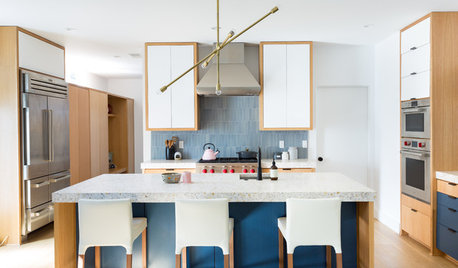

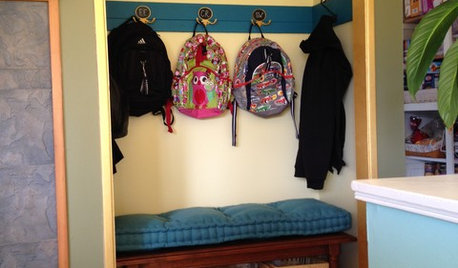
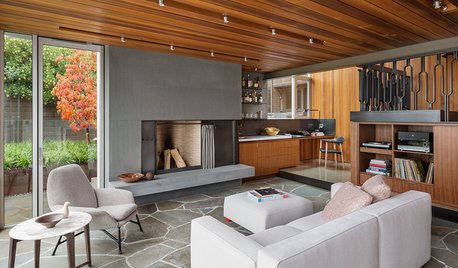

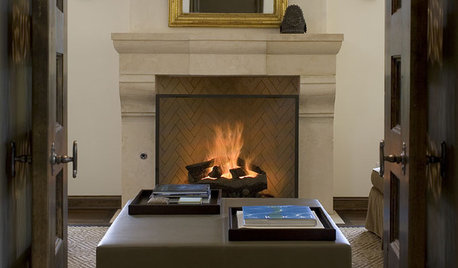







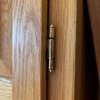
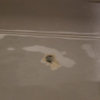


kudzu9